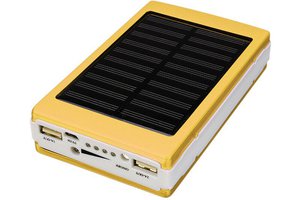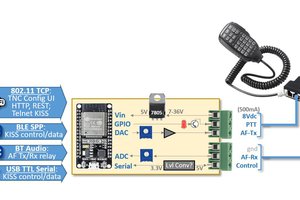[TODO: pics and next steps]
I was researching WebAudio (audio in browser) hacks for a different project, and ran across this example of someone using regular audio output to drive a regular RS232 serial port connection: https://sudoroom.org/serial-over-webaudio/
As a fan of novel comms workarounds, I was intrigued and decided to explore this further. Hackaday itself had featured similar projects, too: http://hackaday.com/2010/11/10/android-talks-pulsewave/. There was even a bidirectional communications example described here http://hackaday.com/2014/11/04/using-a-headphone-jack-as-a-uart/ as part of the Espruino Web IDE project.
However, I wanted to not just talk to my own MCU board, but a proper legacy serial device, the kind with the proper full DB9 or DB25 plug. Looking up the RS232 spec details, I realized that it was not enough to convert the audio signal into regular 5V TTL levels but the full +/- double-digit volt range, instead. Thankfully, for that there is already the trusty MAX232 voltage converter chip, which I was even able to purchase pre-mounted on a DB9 plug breakout board.
For the audio-signal-to-TTL-level conversion I adapted the existing schematic from the RobotsEverywhere folks (http://www.robots-everywhere.com/re_wiki/pub/web/Main.AudioSerial.html) that uses a basic open op-amp circuit. It worked like a charm, and the potentiometer helps adapt to different audio levels.
To perform inbound signal conversion from MAX232 5V input levels to computer/phone microphone jack signal, I just fed it through a second op-amp circuit and then performed a simple voltage step-down. That was complicated by the fact that TRRS microphone contacts are actually powered with their own voltage (http://blog.mklec.com/trrs-and-trs-plugs-and-sockets-explained/), so I had to provide a "realistic" impedance on the contact, while still driving it with the data signal.
Prototyping on a breadboard showed that it could be done, and I managed to get a webpage to talk to the Arduino UART chip at 9600 baud. I was even more excited to be able to feed some data back into the webpage, too! The serial encoding-to-audio code was already developed by the ever-prolific Substack (https://github.com/substack/webaudio-serial-tx), but the serial signal decoding logic I had to write from scratch (only later I found the Espruino source code that did the same, and it was not a clean separate module anyway) [TODO: open-source the resulting decoder module].
After that, it was a matter of soldering all the bits onto a small proto-PCB and stuffing it all inside a plastic enclosure. That part was just recently done, and now I am now cleaning the code up and getting ready to make a nice pretty demo with a real serial device (I have a real VT510 text terminal just for that!).
 Nick Matantsev
Nick Matantsev

 Todd
Todd
 Ryan Aguilar
Ryan Aguilar
 Christoph Tack
Christoph Tack
 Ryan Kinnett
Ryan Kinnett
That will be awesome! follow your proyect right now. I'm trying to do the same and walked through the same links/place you mention, until i found this, :)